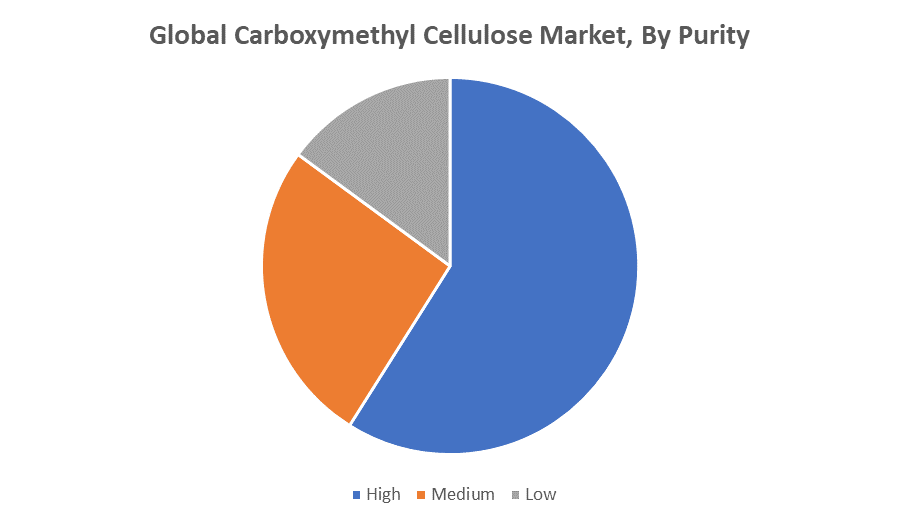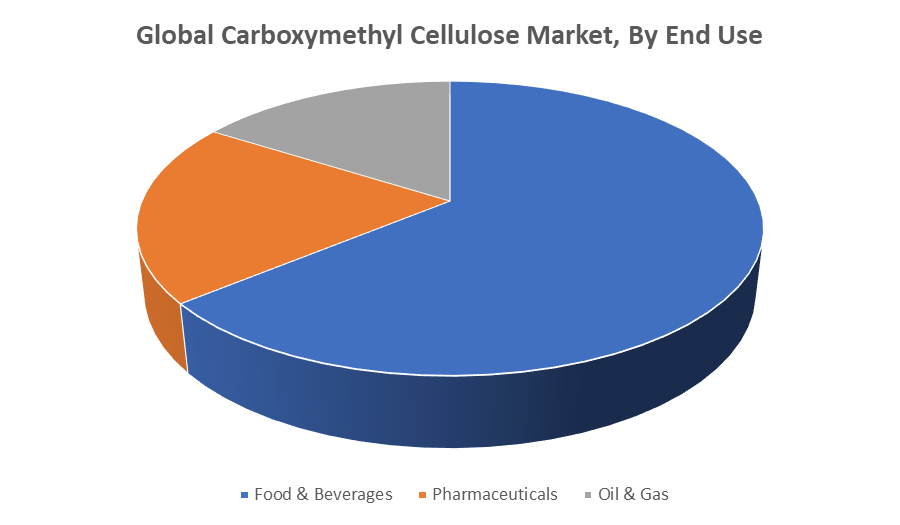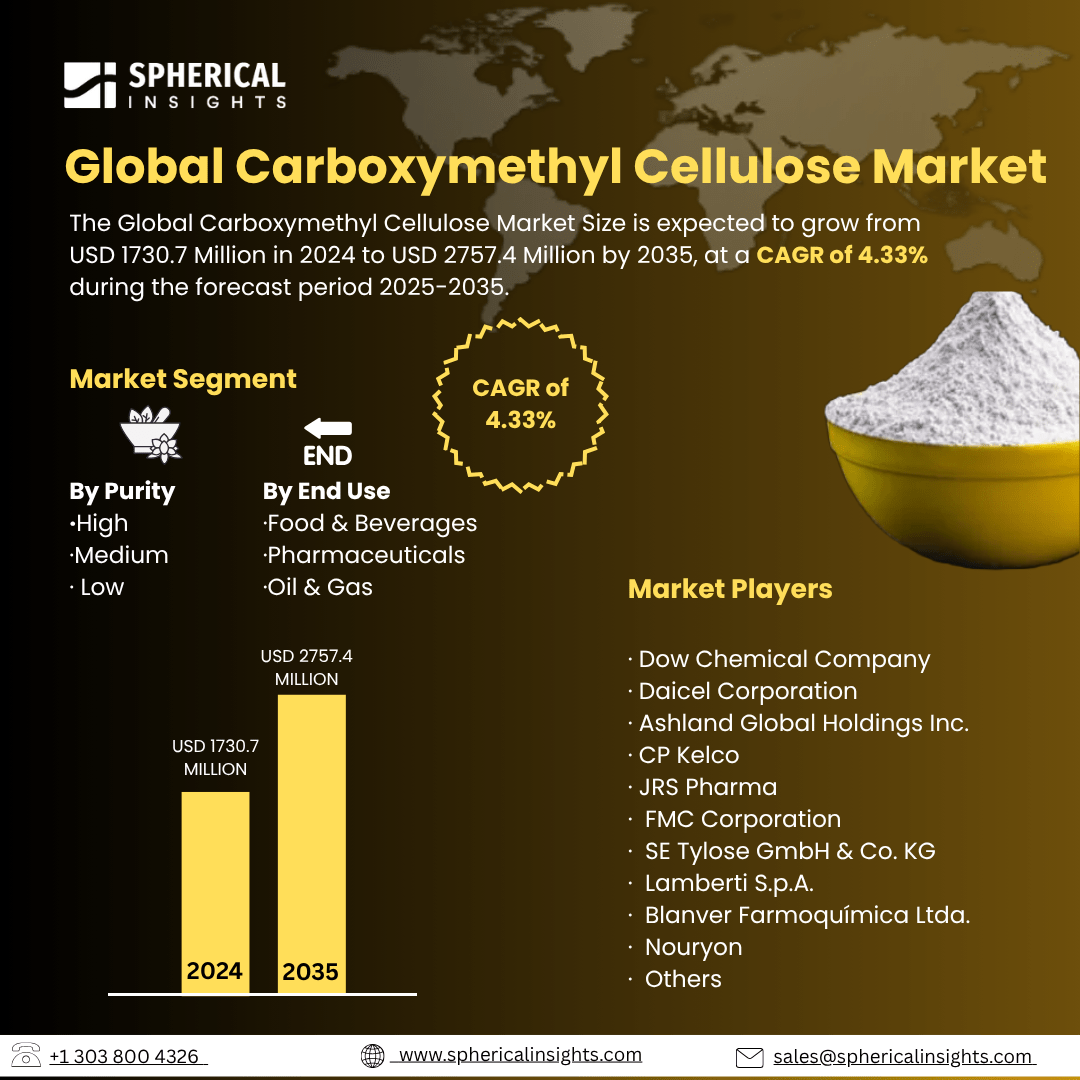Global Carboxymethyl Cellulose Market Insights Forecasts to 2035
- The Global Carboxymethyl Cellulose Market Size Was Estimated at USD 1730.7 Million in 2024
- The Market Size is Expected to Grow at a CAGR of around 4.33% from 2025 to 2035
- The Worldwide Carboxymethyl Cellulose Market Size is Expected to Reach USD 2757.4 Million by 2035
- Europe is expected to grow the fastest during the forecast period.

Carboxymethyl Cellulose Market
Carboxymethyl cellulose (CMC) is a water-soluble cellulose derivative widely used as a thickening, stabilizing, and emulsifying agent across various industries. Produced by chemically modifying cellulose, CMC is valued for its ability to improve texture, viscosity, and moisture retention in products. It finds applications in food and beverages to enhance consistency, in pharmaceuticals for controlled drug release, and in cosmetics as a stabilizer. Additionally, CMC is utilized in paper production to improve strength and quality, as well as in textiles and detergents. The compound’s biodegradable and non-toxic nature makes it an attractive alternative to synthetic additives. The global CMC market encompasses the production, processing, and distribution of this versatile polymer, serving numerous industrial sectors. Continuous research and product innovation support the development of tailored CMC grades to meet specific application needs. Overall, CMC remains an essential functional ingredient contributing to product performance across multiple fields.
Attractive Opportunities in the Carboxymethyl Cellulose Market
- CMC is increasingly used in construction to improve water retention in cement and in oil & gas to enhance drilling fluid performance. These emerging applications offer new growth avenues beyond traditional markets. Developing specialized CMC grades for these industries can help manufacturers tap into lucrative sectors seeking sustainable, high-performance additives.
- With rising demand for sustainable and clean-label ingredients, there’s a strong opportunity to develop eco-friendly, biodegradable CMC variants. These green products cater to packaging, cosmetics, and personal care sectors focused on reducing environmental impact. Investing in sustainable manufacturing and promoting green CMC can boost market share and meet regulatory standards.
Global Carboxymethyl Cellulose Market Dynamics
DRIVER: Growing demand across various industries
The global carboxymethyl cellulose market is primarily driven by its growing demand across various industries due to its versatile functional properties. In the food industry, CMC is widely used as a thickener, stabilizer, and emulsifier to improve texture and shelf life of processed foods, which boosts its consumption. The pharmaceutical sector increasingly relies on CMC for controlled drug delivery and as a binder in tablets, further expanding its market. Rising demand in cosmetics and personal care products for natural, biodegradable ingredients supports market growth as well. Moreover, the expanding paper and textile industries utilize CMC to enhance product quality, contributing to steady demand. Increasing consumer preference for clean-label and eco-friendly products promotes the use of CMC as a natural additive. Technological advancements in production processes have also improved CMC quality and application efficiency. Collectively, these factors drive consistent growth and innovation within the global CMC market.
RESTRAINT: Complex and energy-intensive manufacturing process
Volatility in raw material prices, especially cellulose derived from wood pulp and cotton, which can increase production costs and affect profit margins. Additionally, the complex and energy-intensive manufacturing process of CMC can limit production scalability and raise operational expenses. Strict regulatory standards related to food safety, pharmaceuticals, and cosmetics impose rigorous testing and compliance requirements, potentially delaying product approvals and market entry. Moreover, the presence of alternative synthetic polymers and stabilizers that may offer lower costs or specialized properties creates competition, limiting CMC’s market share in some applications. Environmental concerns about chemical processing and waste generation during CMC production also pose challenges, prompting manufacturers to invest in cleaner technologies. These factors combined may slow down the overall growth and adoption of CMC in certain industries despite its wide applicability.
OPPORTUNITY: CMC is also being used more in industries like construction
Scientists are working to create special types of CMC that can be used in new ways, like better medicines and healthier food products. People want more eco-friendly and biodegradable products, so companies can make green versions of CMC for things like packaging and coatings. CMC is also being used more in industries like construction, where it helps keep water in cement, and in oil drilling to improve fluid flow. Using new technology to make CMC faster and cheaper can help companies sell it in more places, especially where prices matter. Working together with other businesses can also help create new uses for CMC. These chances can help the CMC market grow and reach new areas beyond its usual uses.
CHALLENGES: Maintaining consistent quality across different batches
One key challenge is maintaining consistent quality across different batches, as variations in raw materials can affect product performance, leading to customer dissatisfaction. Additionally, the need for specialized knowledge and expertise to customize CMC for specific applications can limit its widespread adoption, especially among smaller manufacturers. Supply chain disruptions, including delays in sourcing raw materials, can impact timely production and delivery. Another challenge lies in meeting evolving regulatory requirements that differ across countries, making global market expansion complex and costly. Furthermore, educating end-users about the benefits and proper use of CMC remains important, as lack of awareness can slow adoption in new industries. Addressing environmental concerns related to chemical processing and waste management also requires investment in cleaner, sustainable manufacturing methods. These challenges require strategic management to ensure steady growth and innovation in the CMC market.
Global Carboxymethyl Cellulose Market Ecosystem Analysis
The global carboxymethyl cellulose market ecosystem includes raw material suppliers providing cellulose, chemical manufacturers producing CMC, and distributors delivering it to various industries. Key end-users span food, pharmaceuticals, cosmetics, paper, textiles, and oil drilling, where CMC enhances product performance. Research institutions drive innovation, while regulatory bodies ensure safety and quality standards. Logistics and supply chain services enable efficient global distribution. Together, these components create an interconnected network supporting the production, development, and application of CMC worldwide.
Based on the purity, the high purity segment accounted for the largest revenue share over the forecast period

The high purity segment accounted for the largest revenue share over the forecast period due to its wide use in industries requiring stringent quality standards, such as pharmaceuticals, food, and cosmetics. High purity CMC ensures better performance, safety, and consistency, making it essential for sensitive applications. This segment’s dominance is driven by increasing demand for premium-grade products that meet regulatory requirements and consumer expectations, supporting steady market growth throughout the forecast period.
Based on the end use, the food & beverages accounted for the largest revenue share during the forecast period

The food & beverages segment accounted for the largest revenue share during the forecast period. This is because carboxymethyl cellulose is widely used as a thickener, stabilizer, and emulsifier in various food products, improving texture and shelf life. The growing demand for processed and convenience foods drives CMC consumption in this sector. Additionally, its safety and natural origin make it a preferred ingredient in food applications, supporting the segment’s leading revenue contribution over the forecast period.
Asia Pacific is anticipated to hold the largest market share of the carboxymethyl cellulose market during the forecast period
Asia Pacific is anticipated to hold the largest market share of the carboxymethyl cellulose market during the forecast period. This growth is driven by the region’s expanding food processing, pharmaceutical, and personal care industries. Increasing urbanization, rising disposable incomes, and growing consumer awareness about product quality contribute to higher demand for CMC-based products. Additionally, the presence of major manufacturers and improving infrastructure support market development, making Asia Pacific a key hub for CMC production and consumption worldwide.
Europe is expected to grow at the fastest CAGR in the carboxymethyl cellulose market during the forecast period
Europe is expected to grow at the fastest CAGR in the carboxymethyl cellulose market during the forecast period. This growth is driven by strong demand for clean-label, natural, and biodegradable ingredients in food, pharmaceuticals, and personal care products. Advances in formulations and increasing focus on sustainability also boost the market. Key countries like Germany, France, and the UK lead this growth due to their developed industries and supportive regulations, making Europe a rapidly expanding market for CMC.
Key Market Players
KEY PLAYERS IN THE CARBOXYMETHYL CELLULOSE MARKET INCLUDE
- Dow Chemical Company
- Daicel Corporation
- Ashland Global Holdings Inc.
- CP Kelco
- JRS Pharma
- FMC Corporation
- SE Tylose GmbH & Co. KG
- Lamberti S.p.A.
- Blanver Farmoquímica Ltda.
- Nouryon
- Others
Market Segment
This study forecasts revenue at global, regional, and country levels from 2020 to 2035. Spherical Insights has segmented the carboxymethyl cellulose market based on the below-mentioned segments:
Global Carboxymethyl Cellulose Market, By Purity
Global Carboxymethyl Cellulose Market, By End Use
- Food & Beverages
- Pharmaceuticals
- Oil & Gas
Global Carboxymethyl Cellulose Market, By Regional Analysis
- North America
- Europe
- Germany
- UK
- France
- Italy
- Spain
- Russia
- Rest of Europe
- Asia Pacific
- China
- Japan
- India
- South Korea
- Australia
- Rest of Asia Pacific
- South America
- Brazil
- Argentina
- Rest of South America
- Middle East & Africa
- UAE
- Saudi Arabia
- Qatar
- South Africa
- Rest of the Middle East & Africa






